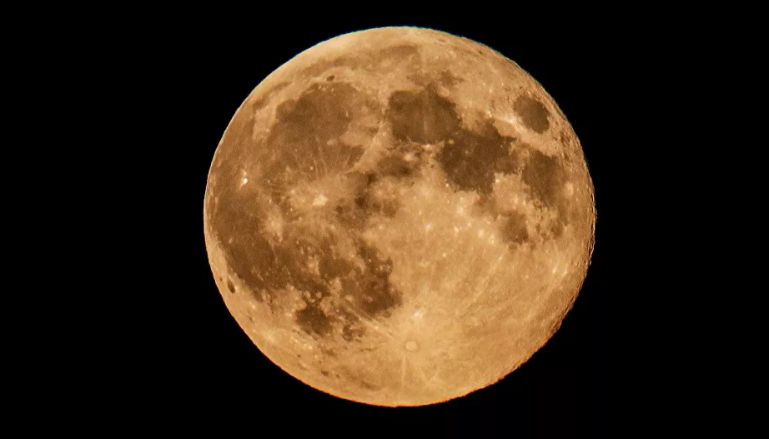The Indian space probe Chandrayaan-1 detected clusters of hematite on the Moon, a mineral that forms only in the presence of oxygen and water. The finding puzzled scientists who are now trying to explain the appearance of this oxidized mineral formation on the surface of Earth’s satellite.
In 2008, the Moon Mineralogy Mapper (M3) spectrometer designed by NASA aboard India’s Chandrayaan-1 mission found water in the form of ice in the polar regions of the Moon.
Now, when deciphering the data from this tool, American researchers at NASA’s Jet Propulsion Laboratory (JPL) detected spectral lines corresponding to iron oxide hematite (Fe2O3).
Hematite is a common oxidation product of iron-containing rocks found on Earth, Mars, and some asteroids. It is the iron oxides that give the red planet its color. But on the Moon, where there is no oxygen or liquid water, there should be no hematite.
“At first, I totally didn’t believe it. It shouldn’t exist based on the conditions present on the Moon,” Fraeman said. “But since we discovered water on the Moon, people have been speculating that there could be a greater variety of minerals than we realize if that water had reacted with rocks,” says Abigail Fraeman, one of the authors of the article published in the journal Science Advances and cited in the NASA JPL statement.
The authors describe a model that explains how iron oxide may have formed in the lunar environment. According to the researchers, the source of oxygen was the Earth’s atmosphere. In 2007, the Japanese artificial lunar satellite Kaguya discovered that oxygen from Earth’s upper atmosphere can reach the Moon. The M3 data indicates that there is more hematite on the lunar side close to our planet.
Also, the Moon is gradually moving away from Earth, and several billion years ago, when two planets were closer to each other, more oxygen could have reached the lunar surface.
The authors admit that the water ice at the poles is not enough to explain the “hematite mystery”, since this iron oxide was found much further away from the ice clumps.
Therefore, they propose another explanation involving cosmic dust that settled on the surface of the moon. It can transport water molecules and release them from lunar rocks by the impact. In addition, the heat of these impacts increases the oxidation rate.
According to the researchers, at the most appropriate time, when the Moon was protected from the solar wind by the Earth’s magnetosphere, on its surface, bombarded by cosmic dust particles, an oxidation reaction of iron could have occurred that formed the mineral oxide.
